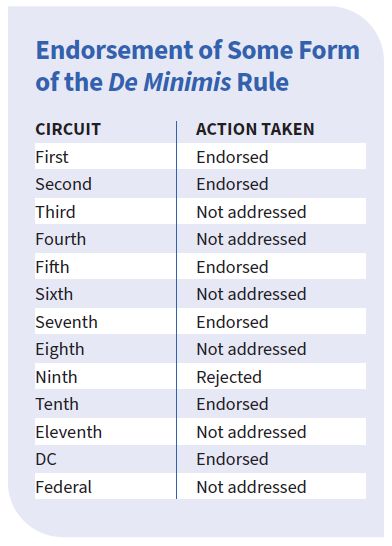The Supreme Court's 2021 ruling in TransUnion LLC v. Ramirez put a renewed focus on "injury in fact" as a key jurisdictional question in class action lawsuits—and the ramifications of that decision continue to unfold in litigation.
Citing TransUnion, a number of courts have been extending the focus on concrete injury to the settlements of class action lawsuits—and in many cases, their reviews have led them to invalidate settlements based on plain- tiffs' lack of Article III standing. "Some courts have taken the unusual step of deciding on their own—without either of the settlement parties bringing it to their attention—to rule on the standing issue in the context of a settlement," says Mohamed Awan, a partner in Crowell & Moring's Litigation and Mass Tort, Product, and Consumer Litigation groups.

For example, in Williams v. Reckitt Benckiser LLC (2023), the U.S. Court of Appeals for the Eleventh Circuit vacated a class settlement that had been approved by the district court. The plaintiffs had alleged that Reckitt Benckiser had provided misleading statements about a supplement's effectiveness in improving brain function, and the settlement had included not only compensation but also injunctive relief that required the company to change its product labeling. However, the court noted that the plaintiffs had only alleged past harm, meaning that they lacked standing to seek injunctive relief that would only affect the future. This invalidated the previous class certification, and therefore the settlement. Such sua sponte actions, says Awan, "have been something of an unseen result of TransUnion."
New ways to allege harm
Meanwhile, courts continue to wrestle with the TransUnion-driven issue of unnamed and uninjured class members when certifying a class. In particular, they differ in their approach to the de minimis rule that says a class must have more than a minimum number of injured class members in order to be certified—without saying what that number is. "If there's just one plaintiff that did not have a concrete injury, is that enough to unravel the class? Or should it be some higher number or a percentage?" asks Awan. "The question has been challenged enough in the district courts that it's made its way to various courts of appeal—and there is a split among those courts. That raises the possibility of more litigation, and eventually the Supreme Court taking it up."
Plaintiffs are now claiming that companies have harmed them by using their copyrighted material or their personal information to feed into AI systems. — Mohamed Awan
As TransUnion has made concrete injury central to class actions, plaintiffs have been finding new ways to allege harm in situations where they have not experienced direct economic injuries. This has included the citing of emotional injuries that might become manifest in the future or informational injuries in which plaintiffs claim they were not given enough information by a company to make sound purchasing decisions. As plaintiffs continue to search for new approaches to claiming harm, artificial intelligence is likely to be an attractive field. "Plaintiffs are now claiming that companies have harmed them by using their copyrighted material or their personal information to feed into AI systems," says Awan. "While at least one federal appeals court has rejected this theory, plaintiffs' lawyers will no doubt continue to get creative here—and given the exponential growth in the use of artificial intelligence, a wave of AI class actions seems all but certain."
The content of this article is intended to provide a general guide to the subject matter. Specialist advice should be sought about your specific circumstances.
Mohamed Awan
Crowell & Moring LLP
1001 Pennsylvania Avenue NW
Suite 1100
Washington, DC
DC 20004-2595
UNITED STATES
Tel: 202624.2500
Fax: 202628.5116
E-mail: mbrandt@crowell.com
URL: www.crowell.com
© Mondaq Ltd, 2024 - Tel. +44 (0)20 8544 8300 - http://www.mondaq.com, source Business Briefing







